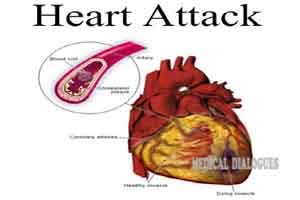High BP,Diabetes more strongly linked to heart attack in women: BMJ
Prof.Dr.Dram,profdrram@gmail.com,Gastro Intestinal,Liver Hiv,Hepatitis and sex diseases expert 7838059592,9434143550
 Coronary heart disease (CHD) has been the leading cause of mortality worldwide for over 25 years, and was estimated to be the cause of 17% of deaths globally in 2016.3 Death rates from CHD are considerably lower in women than in men at younger ages, but often converge with increasing age. Male-to-female coronary mortality rate ratios are typically around in middle age and thereafter In the INTERHEART case-control study, women had their first myocardial infarction (MI) on average nine years later than men. In addition to later presentation, men and women can have different symptoms, treatments, and outcomes of MI, some of which may be because of the effects and prevalence of risk factors. Several large scale meta-analyses have compared the sex specific associations between risk factors and CHD.
Coronary heart disease (CHD) has been the leading cause of mortality worldwide for over 25 years, and was estimated to be the cause of 17% of deaths globally in 2016.3 Death rates from CHD are considerably lower in women than in men at younger ages, but often converge with increasing age. Male-to-female coronary mortality rate ratios are typically around in middle age and thereafter In the INTERHEART case-control study, women had their first myocardial infarction (MI) on average nine years later than men. In addition to later presentation, men and women can have different symptoms, treatments, and outcomes of MI, some of which may be because of the effects and prevalence of risk factors. Several large scale meta-analyses have compared the sex specific associations between risk factors and CHD.
Although the incidence of MI was higher in men than in women, several risk factors were more strongly associated with MI in women compared with men. Sex specific associations between risk factors and MI declined with age, but, where it occurred, the higher relative risk in women remained. As the population ages and the prevalence of lifestyle associated risk factors increase, the incidence of MI in women will likely become more similar to that in men.
In the study published in BMJ,5081 participants (1463 (28.8%) of whom were women) had MI over seven years’ mean follow-up, resulting in an incidence per 10 000 person years of 7.76 (95% confidence interval 7.37 to 8.16) for women and 24.35 (23.57 to 25.16) for men. Higher blood pressure indices, smoking intensity, body mass index, and the presence of diabetes were associated with an increased risk of MI in men and women, but associations were attenuated with age.
In women, systolic blood pressure and hypertension, smoking status and intensity, and diabetes were associated with higher hazard ratios for MI compared with men: ratio of hazard ratios 1.09 (95% confidence interval 1.02 to 1.16) for systolic blood pressure, 1.55 (1.32 to 1.83) for current smoking, 2.91 (1.56 to 5.45) for type 1 diabetes, and 1.47 (1.16 to 1.87) for type 2 diabetes. There was no evidence that any of these ratios of hazard ratios decreased with age (P>0.2). With the exception of type 1 diabetes, the incidence of MI was higher in men than in women for all risk factors.
- Kidney stones universally present hazard in north india,dillution by water prevent it
- Steroid and placebo effect equally for mild persisting asthma with low sputum eosinophils
- Government wants to fix public healthcare staff shortages with ayush docs: will it work?
- Plea in hc for payment of salaries of edmc, north mcd teachers and doctors
- 7 indian pharma companies named in us lawsuit over inflating generic drug prices
- Woman in up dies after explosion in her mouth during treatment,what is diagnosis?
- Woman in up dies after explosion in her mouth during treatment,what is diagnosis?
- Woman in up dies after explosion in her mouth during treatment,what is diagnosis?
- Air pollution ! mothers organising rally in london,anaesthetist choosing gas,will india follow?
- Cardiac arrest is always not sudden as understood -a study

 Comments (
Comments ( Category (
Category ( Views (
Views (